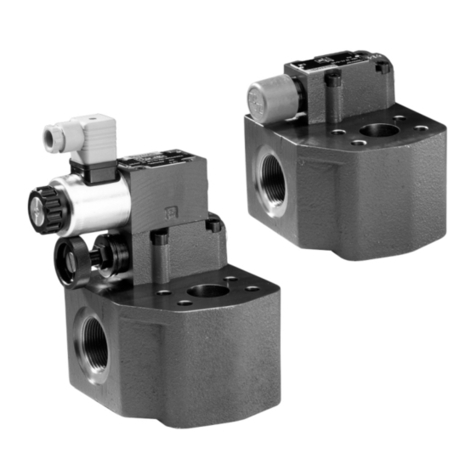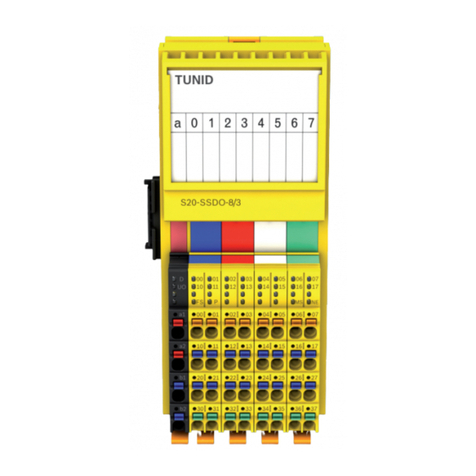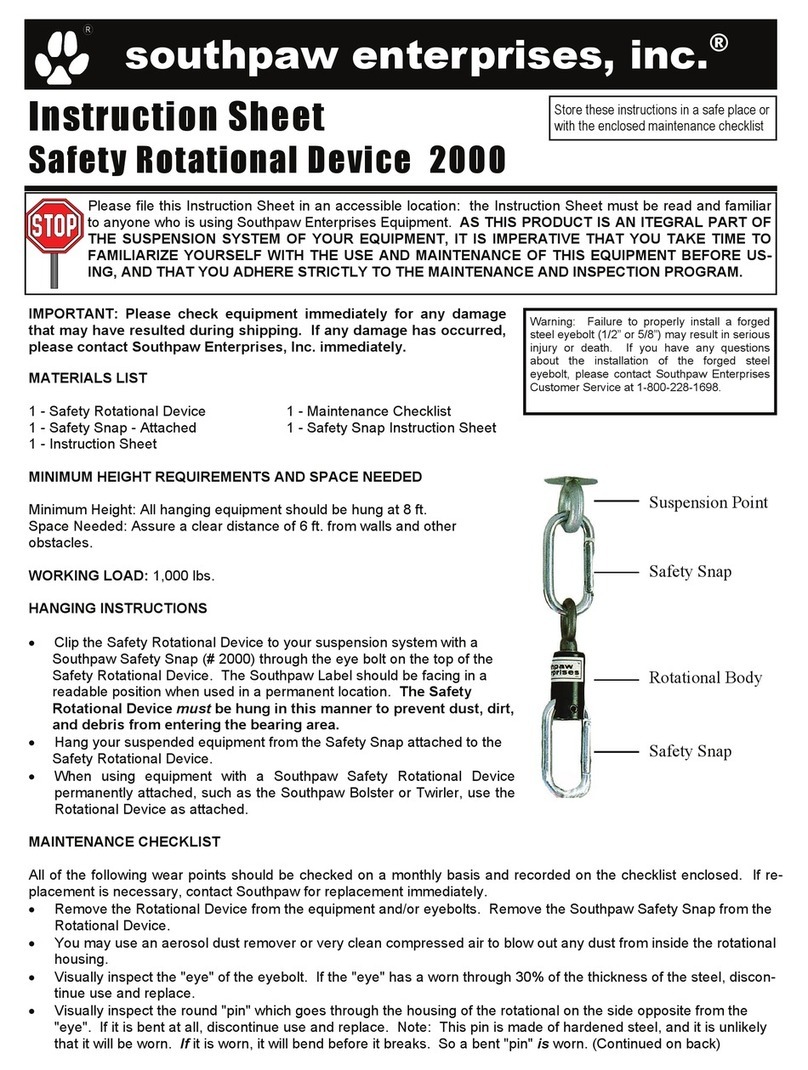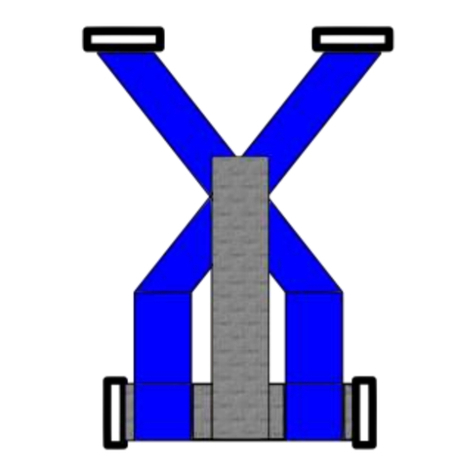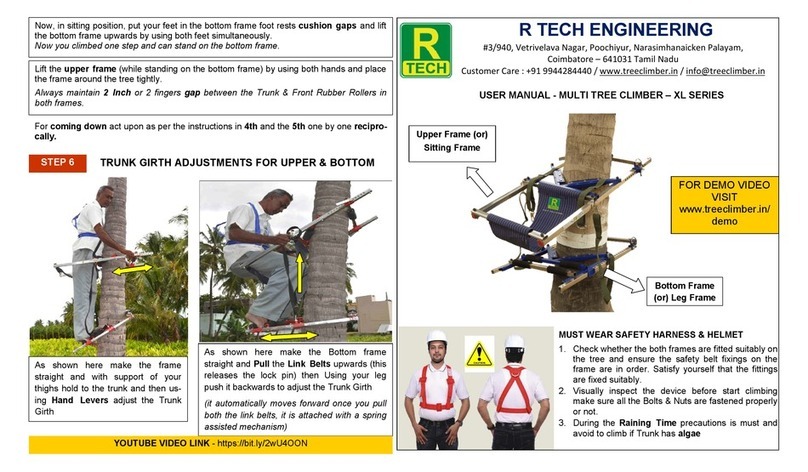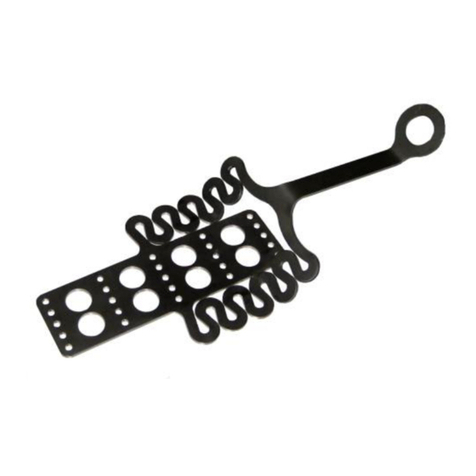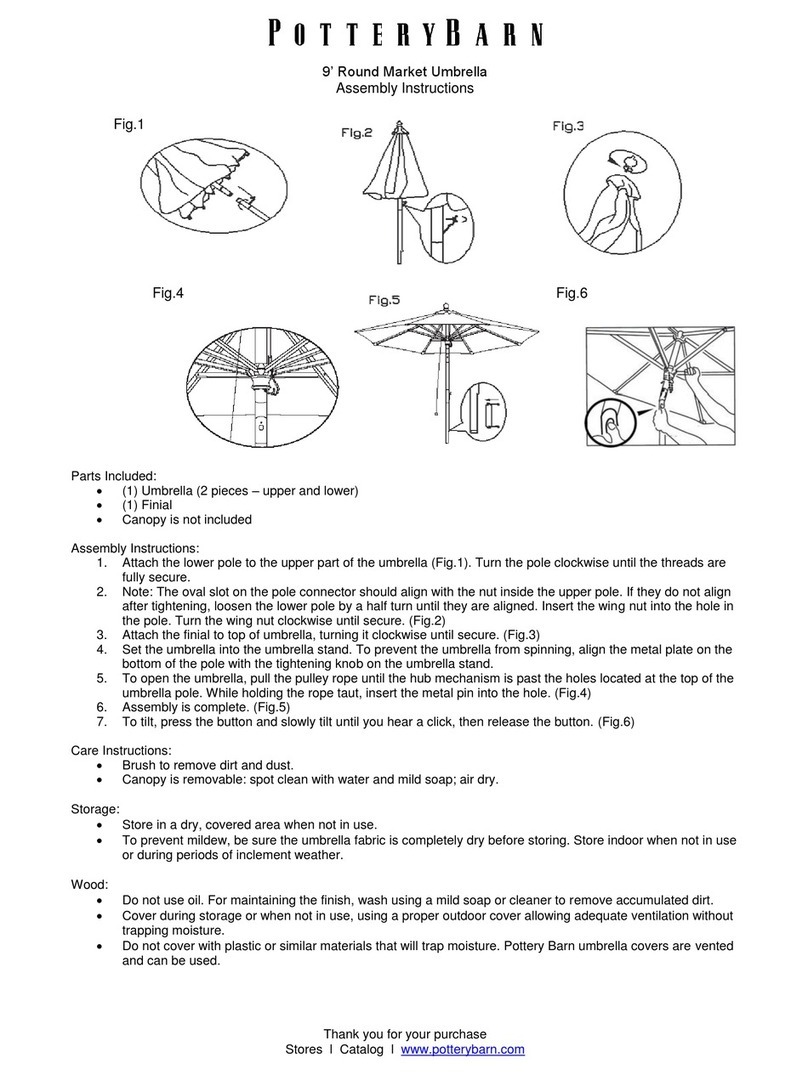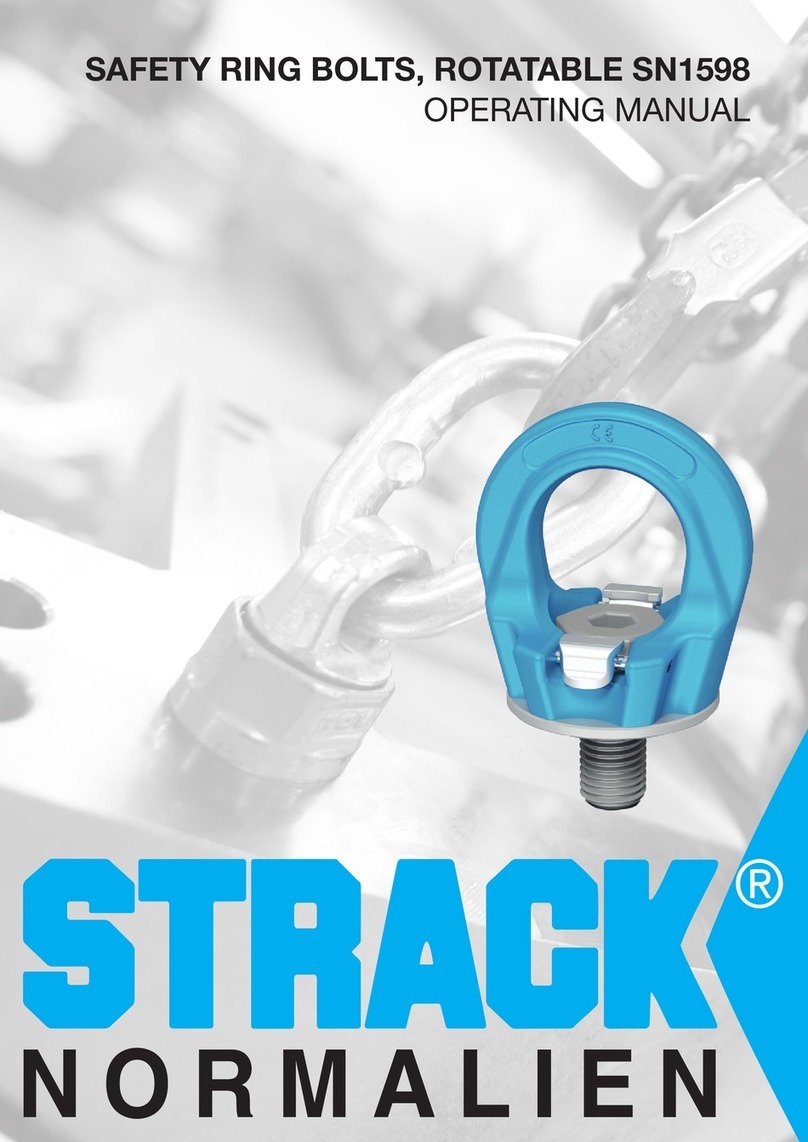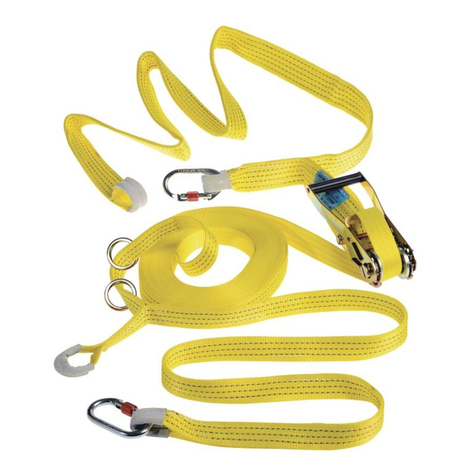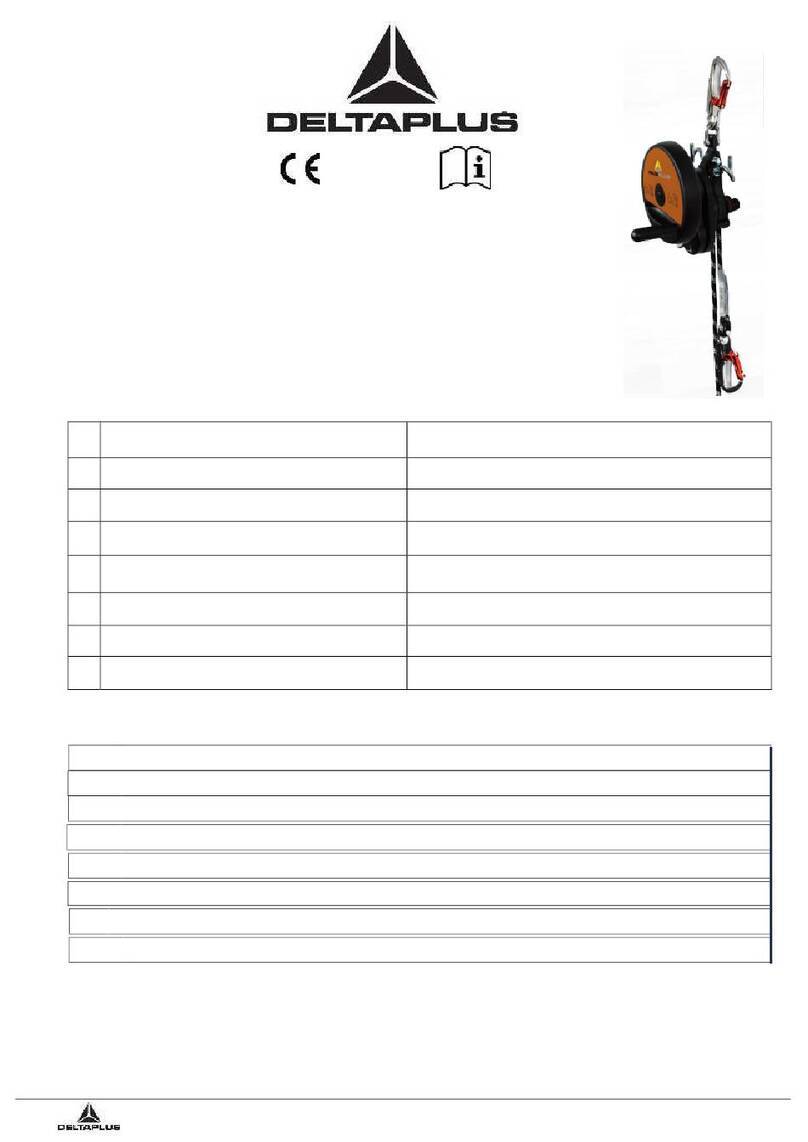Bosch SE 120 LSNi User manual

SE 120 LSNi SmartKey Arming Device
Installation Manual
SE 120 LSNi
EN

Table of Contents
2
Chapter Page
System Description
System Overview .......................................................................................................................... 3
Description of the Connections on the Control Unit...................................................................... 4
Installation Instructions
Installing System Components...................................................................................................... 6
Installing the Magnetic Contact and Bolt Contact......................................................................... 7
Connecting the Control Panel and Optional Components............................................................ 8
Connecting for Operation without an SPE Blocking Element....................................................... 9
Function Test for the SPE Blocking Element and Reader.......................................................... 10
Reading In Keys and Programming the System......................................................................... 11
Concluding System Installation................................................................................................... 16
Operating the System
Viewing the System Status ......................................................................................................... 17
Arming/Disarming........................................................................................................................ 18
Example of Operation with 4 SmartKeys .................................................................................... 19
Disarming for "Forced Unlocking and Alarm Display"................................................................. 19
Fault Elimination
Problems with Installation and Reading In Keys......................................................................... 20
Diagnosis Options on the Open Control Unit.............................................................................. 20
Operating Problems During Normal Operation........................................................................... 21
Replacing the Bolt in the SPE Blocking Element........................................................................ 22
Notes for Maintenance and Service
General........................................................................................................................................ 23
Inspection and Maintenance....................................................................................................... 23
Loss of Keys................................................................................................................................ 24
Loss of the Security Card............................................................................................................ 24
Ordering Additional Keys ............................................................................................................ 25
Restoring the Default Settings .................................................................................................... 25
Technical Data........................................................................................................................... 26

System Description
3
System Overview
The SE 120 LSNi SmartKey arming device is a system solution for arming intrusion systems. The
individual components of the system can be put together as required for the intended usage.
Operating modes with or without the SPE blocking element are possible. Control authorizations
for arming/disarming are defined during control panel programming.
Key with security card: the system operates like a locking device. The key kit consists of a
set number of valid keys and a security card. The control unit is initialized using the security
card and accepts only the keys of the key kit. To order additional keys, the security card must
be sent to the manufacturer together with the order. The keys are labeled with a consecutive
key number, a security card number and an 8-digit identification number.
Standard key (without security card): the keys are not numbered and can be read in as of-
ten as required. The keys are labeled with an 8-digit identification number.
SPE blocking element
The SPE blocking element is an additional
lock for the door and is meant to prevent
unauthorized entry to the armed area. The
SPE blocking element is always installed in
the armed area in conjunction with a kit to
enable it to accommodate different doors
(the image shows a door-mounted installa-
tion; for other variants, please see installing
the SPE blocking element). A conventional
magnetic contact can be used with the
door-mounted installation kit.
Operation types with and without blocking
elements are possible.
SE 120 LSNi control unit
The control unit processes the status re-
ports of all components in the system,
communicates these reports to the intrusion
alarm system and controls the SPE blocking
element. The control unit is installed in the
secure area.
Reader
The system is armed and disarmed by hold-
ing an electronic key up to the reader. The
LED and buzzer provide information about
the status of the system as well as opera-
tion.
The reader can be surface mounted or re-
cessed mounted (outside the secure area).
SmartKeys
There are two types of SmartKeys
xKeys with a security card
xStandard key (without security card)
Bolt contact
A conventional bolt contact can be con-
nected to the control unit. The bolt contact is
not included in the scope of delivery.
Magnetic contact
A
conventional standard magnetic contact
can be connected to the control unit. The
magnetic contact is not included in the sco-
pe of delivery.
Note: Conventional contacts are the rec-
ommended contact type as they can be
processed directly by the control unit.
SE 120 LSNi
control unit
SPE blocking
element
Bolt
contact Reader
SmartKey
key

System Description
4
Description of the Connections on the Control Unit
The control unit connections have different functions. There are inputs, outputs and plug-in ter-
minals. Inputs and outputs have to be assigned according to a specific schema with regard to the
scope of basic functions.
0V 41
LED2 31
DK
23 24
PL2 53
0V 52
PL1 51
0V 50
Free 49
Free 48
VÜ 45
0V 44
Ground 43
+12V SPE 42
HALL1 40
HALL2 39
MOT1 38
MOT2 37
ANT1 36
ANT2 35
+12V 34
SU 33
EW1a 47
EW1b 46
LED
1 +U
2 0V
3 aLSN1
4 bLSN1
5 +U
6 0V
7 aLSN2
9 Ground
8 bLSN2 REEG
n
21 Free
22 Free LED1 32
Free
Free
REEG 12K1 already installed
n
oPoints 21/22 and 23/24 are connected internally.
o
57 56
Free Free
55 54
Free Free
A
B
C
D
B1 O
p
eration
BR1
B3 Bolt Test
B2 Programming
1
0
3
4
5
6
7
892
C
L0121
0
3
4
5
6
7
892
18
17 Test

System Description
5
Description of the Connections on the Control Unit
Connection Name Function Description
1
2
3
4
5
6
7
8
9
+ U
0V
aLSN1
bLSN1
+ U
0V
aLSN2
bLSN2
Ground
Input
Input
Input
Input
Output
Output
Output
Output
Distributor
Power supply 9.6 - 30V
Power supply 0V
LSN incoming
LSN incoming
Power supply 9.6 - 30V
Power supply 0V
LSN outgoing
LSN outgoing
Operating ground
17 Test Input This input is for test purposes only, i.e. a line
should only be connected temporarily to perform
a test. The SPE blocking element's bolt will en-
gage when 0V is connected.
18 N.A.
21/22
23/24 Free
Free Distributor
Distributor Free plug-in terminals, 21 and 22 connected
Free plug-in terminals, 23 and 24 connected
31
32
33
34
35/36
LED 2
LED 1
SU
+12V
ANT2/ANT1
Output
Output
Output
Output
Input
Green LED reader
Red LED reader
Buzzer reader
Power supply 12V reader
Antenna reader
37/38
39
40
41
42
MOT2/MOT1
HALL2
HALL1
0V
+ U
Output
Input
Input
Output
Output
SPE blocking element motor control
Detection of initial bolt position
Detection of final bolt position
Power supply 0V for SPE blocking element
Power supply 12V for SPE blocking element
43 Ground Distributor Operating ground
44/45 0V/VÜ Input Connection option for conventional bolt contact
46/47
50/51 EW1b/EW1a
0V/PL 1 Input
Input Connection option for magnetic contact
Connection option for magnetic contact
48/49 Free Distributor Free plug-in terminals
52/53 0V/PL 2 Input Primary line that can be used freely
54 - 57 Free Distributor Free plug-in terminals
Note: The primary lines PL 1, PL 2 and VÜ are evaluated by the control unit.
REEG
51
50
47
46
Conventional magnetic contact
REEG is
permanently built-in

Installation Instructions
6
Installing System Components
Note the following during installation:
xUsed shielded cables only.
xThe usual precautionary measures for handling C-MOS technology apply to han-
dling the circuit boards and to soldering work. Wear a grounded wrist strap when
working on the control panel.
Mounting the control unit
xMount the control unit to the wall. When choosing a position to mount the unit,
please note that the reader and the SPE blocking element are equipped with a 6 m
molded cable that must not be lengthened.
Installing the reader
xInstall the reader according to the enclosed installation notes.
If you are installing the reader close to other systems with proximity scanners, please
make sure that a distance to these systems of at least 0.5 m is maintained.
The installation height should be at least 1.2 m and preferably recessed mounted. The
reader is molded and completely resistant to environmental influence. Do not fit the rea-
der cover until you have performed all the function tests. Removing the cover after it
has been fitted will cause damage to the cover. The reader is equipped with a 6 m
molded cable that must not be lengthened.
!
!
!

Installation Instructions
7
Installing System Components
Installing the SPE blocking element
xInstall the SPE blocking element using the appropriate kit and in accordance with the en-
closed installation notes.
Make sure the door cannot slam shut. The bolt on the SPE blocking element could oth-
erwise be damaged during start-up by a slamming door.
SPE blocking element variants and kits
Installing the Magnetic Contact and Bolt Contact
Install the magnetic contact or bolt contact in accordance with the manufacturer's instructions.
The control unit will serve as a distributor for the contacts.
!
A
ngled collarKit for
glass doors
Installation example:
Spacers
Frame
Door
Bolt piece of the
blocking element
Sleeve piece of the
blocking element
Fastening
bar of the
kit
Glass
Installation on the door or on the frame Installation on the door or on the frame
Bushing
Counterpiece
Normal collar
Blocking
element
Collar
Counterpie-
ce/bushing
Kit for on-the-door installation. In
the kit, a conventional magnet
contact can be used.
Bolt piece (installed on the frame)
Sleeve piece (installed on the door)
Door
Installation example: Installation example:

Installation Instructions
8
Connecting the Control Panel and Optional Components
Make sure the control panel is disconnected from the power supply.
Connect the control unit and the optional components
as shown in the connection diagram on the following page.
Address switch: The address switch is used for LSN control panels in the planning stage. The
address switch does not need to be adjusted on any of the currently available LSN control pan-
els. The address switch should remain in the positions CL 0 0. Default setting.
Preliminary information on the address switch:
CL 0 0 = "Classic" LSN mode (standard setting)
001 – 254 = LSNi mode with manual addressing of the control unit
0 0 0 = LSNi mode with automatic addressing of the control unit
The control unit address is set by positioning the three rotatable switches. Use a flat-head screw-
driver to adjust each switch. The switches will click when turned. The valid range is from 1 to
254. Any setting between 255 and 299 will cause an error message to be displayed on the con-
trol panel.
!
Line length <3m
yl
gn
rd
bk
or
bn
SPE
blo-
cking
element
rd
or
yl
gn
bn
bk
Magnetic
contact
Line length <3m Switch
p
art
Tamper
p
rotection
1
2
3
4
0V 41
LED2 31
DK
23 24
PL2 53
0V 52
PL1 51
0V 50
Free 49
Free 48
VÜ 45
0V 44
Ground 43
+12V SPE 42
HALL1 40
HALL2 39
MOT1 38
MOT2 37
ANT1 36
ANT2 35
+12V 34
SU 33
EW1a 47
EW1b 46
LED
1 +U
2 0V
3 aLSN1
4 bLSN1
5 +U
6 0V
7 aLSN2
9 Ground
8 bLSN2 REEG
n
21 Free
22 Free LED1 32
Free
Free
+
bLSN1
rd
+
0V
aLSN1
0V
aLSN2
bLSN2
bk
wt
yl
rd
bk
wt
yl
LSN
Reader
Bolt contact
Cable length d6 m
REEG 12K1 already installed
n
oPoints 21/22 and 23/24 are connected internally.
o
57 56
Free Free
55 54
Free Free
A
B
C
D
B1 O
p
eration
BR1
B3 Bolt Test
B2 Programming
1
0
3
4
5
6
7
892
C
L0121
0
3
4
5
6
7
892
18
17 Test

Installation Instructions
9
Connecting for Operation Without an SPE Blocking Element
Use the following switching arrangement on the control unit to set the operating mode without
SPE blocking element. Connect the inputs HALL1 and HALL2 to 0V.
0V 41
LED2 31
DK
23 24
PL2 53
0V 52
PL1 51
0V 50
Free 49
Free 48
VÜ 45
0V 44
Ground 43
+12V SPE 42
HALL1 40
HALL2 39
MOT1 38
MOT2 37
ANT1 36
ANT2 35
+12V 34
SU 33
EW1a 47
EW1b 46
LED
1 +U
2 0V
3 aLSN1
4 bLSN1
5 +U
6 0V
7 aLSN2
9 Ground
8 bLSN2 REEG
n
21 Free
22 Free LED1 32
Free
Free
REEG 12K1 already installed
n
oPoints 21/22 and 23/24 are connected internally.
o
57 56
Free
Free
55 54
Free Free
A
B
C
D
B1 O
p
eration
BR1
B3 Bolt Test
B2 Programming
1
0
3
4
5
6
7
892
C
L0121
0
3
4
5
6
7
892
18
17 Test

Installation Instructions
10
Function Test for the SPE Blocking Element and Reader
Turning on the power supply
xMake sure that bridge B1 on the control unit is connected before turning on the power supply.
xTurn on the power supply.
The yellow LED on the control unit displays the system's status as follows:
Yellow LED Status Required action
Off System is OK None
On Electronic defect. Turn the power supply off and then back on.
Replace the control unit if the LED is still acti-
vated.
Function test
1. Remove the jumper from B1 and connect it to B3 on the control unit.
¨The SPE blocking element bolt engages. The yellow LED on the control unit lights up. The
red and green LEDs on the reader light up. The reader buzzer sounds for 5 seconds.
2. Remove the jumper from B3 on the control unit.
¨The SPE blocking element bolt disengages. The LEDs on the control unit and the reader
are go out.
3. Repeat steps 1 - 2 with the door closed to check the precise insertion of the SPE blocking
element's bolt into the bolt-hole.
4. Reconnect the jumper to bridge B1 on the control unit once you have completed the function
test.
The yellow LED on the control unit's circuit board displays the system's status as follows:
LED Status Required action
Off System is OK None
1 flash Bolt will not engage
or disengage.
Check that the SPE blocking element and the
bolt-hole are correctly installed and con-
nected to the power supply.
Repeat the test.

Installation Instructions
11
Reading In Keys and Programming the System
Depending on the "key type" and "reading in method of the key", perform one of the following 4
steps. Reading in keys as described under points 2 and 4 should only be used in exceptional
circumstances. You will find the description on the following pages.
1. Key with security card: Reading in keys
during programming (see point 1).
2. Key with security card: Reading in keys
via the reader (see point 2).
3. Standard key (without security card): Reading in keys
during programming (see point 3).
4. Standard key (without security card): Reading in keys
via the reader (see point 4).
Key (with a security card)
Standard key (without security card)
The standard key is labeled with the 8-digit identification number only.
8-digit identification number
Security card number
Consecutive key number
Key button
Key button

Installation Instructions
12
1. Key with security card:
Reading in keys during programming
Programming the SE 120 LSNi system and reading in the key identification number is car-
ried out with the appropriate programming program (e.g. WinPara or NzPara). This is when
the key's 8-digit identification number is entered into the system. In the programming pro-
gram, select for the keys to be read in during programming (select the parameter "inte-
grated" for SE 120 when using NzPara). The maximum number of keys depends on the
control panel in use.
Reading in occurs in two stages. First, the security card is read in. Reading in the security
card at the reader replaces the manufacturer's general works code with the individual cus-
tomer code. This is followed by programming and the 8-digit identification numbers of the
keys are entered.
Operation sequence:
1. The plugs with the LSN lines (3.4 and 7.8) must be removed from the control unit.
The control panel will display an LSN line malfunction message.
2. Connect the jumper on the control unit's circuit board to bridge B2.
4. Connect the jumper back to B1.
¨The yellow LED on the control unit and the red LED on the reader go out.
5. Reconnect the plugs with the LSN lines to the control unit and reset the LSN line mal-
function message on the control panel.
6. In the programming program, select for the keys to be read in during program-
ming (select the parameter "integrated" for SE 120 when using NzPara). Enter the
keys' 8-digit identification number into the programming program and program the control
panel.
¨This completes programming the keys.
!
3. Hold the front or the reverse side of the security card parallel
to the reader at a maximum distance of 2 cm until the red LED
lights up.
¨This completes reading in the security card.

Installation Instructions
13
2. Key with security card:
Reading in keys via the reader
Keys (maximum 16) can be read in directly via the reader if the 8-digit identification number
is not entered during programming. In the programming program (e.g. WinPara or NzPara),
select for the keys to be read in via the reader (select the parameter "standalone" for SE
120 when using NzPara). The control panel must be programmed before the keys are read
in.
Reading in occurs in two stages. First, the security card is read in, then the keys. Reading in
the security card at the reader replaces the manufacturer's general works code with the indi-
vidual customer code.
Operation sequence:
1. Programming has been concluded with the appropriate settings (see also above).
2. The plugs with the LSN lines (3.4 and 7.8) must be removed from the control unit.
The control panel will display an LSN line malfunction message.
3. Connect the jumper on the control unit's circuit board to bridge B2.
5. Press and hold the key button and hold the first key up to the circle on the center of the
reader at a maximum distance of 2 cm until you hear a short confirmation signal.
6. Repeat step 5 for all the other
keys. The flashing signals of the control
unit's yellow LED and the red LED
on the reader correspond with
the number of keys.
7. Connect the jumper back to B1.
¨The yellow LED on the control unit and the red LED on the reader go out. This com-
pletes programming the keys.
8. Reconnect the plugs with the LSN lines to the control unit and reset the LSN line mal-
function message on the control panel.
4. Hold the front or the reverse side of the security card parallel
to the reader at a maximum distance of 2 cm until the red LED
lights up.
¨This completes reading in the security card.
!
2nd key
1st key
3rd key
etc.

Installation Instructions
14
3. Standard key (without security card):
Reading in keys during programming
Programming the SE 120 LSNi system and reading in the key identification number is car-
ried out with the appropriate programming program (e.g. WinPara or NzPara). This is when
the key's 8-digit identification number is entered into the system. In the programming pro-
gram, select for the keys to be read in during programming (select the parameter "inte-
grated" for SE 120 when using NzPara). The maximum number of keys depends on the
control panel in use.
Reading in occurs in two stages. First, any standard key on the reader is read in. This re-
places the manufacturer's general works code with the code of the standard key. Following
this, programming is carried out with the entry of the 8-digit identification numbers of the
keys.
Operation sequence:
1. The plugs with the LSN lines (3.4 and 7.8) must be removed from the control
unit. The control panel will display an LSN line malfunction message.
2. Connect the jumper on the control unit's circuit board to bridge B2.
4. Connect the jumper back to B1.
¨The yellow LED on the control unit and the red LED on the reader go out.
5. Reconnect the plugs with the LSN lines to the control unit and reset the LSN line mal-
function message on the control panel.
6. In the programming program, select for the keys to be read in during program-
ming (select the parameter "integrated" for SE 120 when using NzPara). Enter the
keys' 8-digit identification number into the programming program and program the control
panel.
¨This completes programming the keys.
3. Press and hold the key button and hold any standard key up to
the reader at a maximum distance of 2 cm until the red LED lights
up.
¨This concludes reading in the standard key's code.
!

Installation Instructions
15
4. Standard key (without security card):
Reading in keys via the reader
Keys (maximum 16) can be read in directly via the reader if the 8-digit identification number
is not entered during programming. In the programming program (e.g. WinPara or NzPara),
select for the keys to be read in via the reader (select the parameter "standalone" for SE
120 when using NzPara). The control panel must be programmed before the keys are read
in.
Reading the standard key into the reader replaces the manufacturer's standard works code
with the standard key's code.
Operation sequence:
1. The plugs with the LSN lines (3.4 and 7.8) must be removed from the control
unit. The control panel will display an LSN line malfunction message.
2. Connect the jumper on the control unit's circuit board to bridge B2.
4. Press and hold the key button and hold the remaining keys up to the circle on the center
of the reader at a maximum distance of 2 cm until you hear a short confirmation signal.
The flashing signals of the control
unit's yellow LED and the red LED
on the reader correspond with
the number of keys.
5. Connect the jumper back to B1.
¨The yellow LED on the control unit and the red LED on the reader go out. This com-
pletes programming the keys.
6. Reconnect the plugs with the LSN lines to the control unit and reset the LSN line mal-
function message on the control panel.
!
3. Press and hold the key button and hold any standard key up to the
circle on the center of the reader at a maximum distance of 2 cm until
the red LED flashes and you hear two short confirmation signals.
2nd key
1st key
3rd key
etc.

Installation Instructions
16
Concluding System Installation
1. Make sure that bridge B1 on the control unit is closed for normal operation. Replace the con-
trol unit cover.
2. Make sure the red and green LEDs on the reader are off (= normal operating condition).
3. Arm and then disarm each key (see following chapter) to make sure that the programming is
correct. Inform the operator of this step in advance to avoid any unnecessary interruption of
operations.
Note: The bolt will engage when the bolt contact is closed.

Operating the System
17
Viewing the System Status
xPress and hold the key button and hold the key up to the reader for 1 second. The system
status is indicated as shown in the following table.
Display element Behavior Meaning
Green LED Lit System disarmed
Flashing System is attempting to disarm
Red LED Lit System is armed
Flashing System is attempting to arm
Buzzer Short signal for 0.5 sec. Process initiated
Short signal for 2.5 sec. Process completed successfully
Interval signal for 5 sec. Process not completed successfully

Operating the System
18
Arming
1. Press and hold the key button and hold the key up to the reader for 3 seconds until you hear a
short signal from the buzzer.
¨The green LED is activated, signaling that the system is currently disarmed.
¨The red LED starts to flash, signaling that the arming process has commenced.
Further reader signals (LED) follow as described in the left-hand box (arming successful) or in
the right-hand box (arming unsuccessful).
Disarming
1. Press and hold the key button and hold the key up to the reader for 3 seconds until you hear a
short signal from the buzzer.
¨The red LED is activated, signaling that the system is currently armed.
¨The green LED starts to flash, signaling that the disarming process has commenced.
Further reader signals (LED) follow as described in the left-hand box (disarming successful)
or in the right-hand box (disarming unsuccessful).
¨The green LED is deactivated.
¨The red LED and the buzzer are acti-
vated for 2.5 seconds (continuous
signal).
System arming successful.
¨The red LED is deactivated.
¨The green LED lights up for 5 seconds.
¨The buzzer simultaneously emits an
interval signal for 5 seconds.
System arming unsuccessful. See the
table "Operating Problems During Normal
Operation" for assistance.
¨The red LED is deactivated.
¨The green LED and the buzzer are
activated for 2.5 seconds (continuous
signal).
Disarming was successful.
¨The green LED is deactivated.
¨The red LED is activated for 5 seconds.
¨The buzzer simultaneously emits an
interval signal for 5 seconds.
Disarming was unsuccessful. See the
table "Operating Problems During Normal
Operation" for assistance.

Operating the System
19
Example of Operation with 4 SmartKeys
All SmartKeys have equal arming and disarming rights.
Arming:
Arming can occur with any SmartKey
once all the bolt contacts are closed
and the detection area is ready to be
activated. Arming will engage all SPE
blocking element bolts.
Disarming:
Any SmartKey can be used for disarm-
ing. Disarming will disengage all SPE
blocking element bolts.
Viewing the system status and the procedures for arming/disarming are the same as described
on the two previous pages.
Disarming for "Forced Unlocking and Alarm Display"
The operator's attention must be drawn to the following points if this function has been
programmed in the EMA.
If the red LED on the reader flashes continuously after disarming, it means that the SmartKey is
signaling an intrusion alarm. It is recommendable to have a procedure in place to protect the
operator, e.g.: do not enter the area; call the alarm company or the police etc. The red LED will
be deactivated when the intrusion alarm system is reset.
If programmed, this function will immediately retract the SPE blocking element bolt when an ex-
ternal alarm is triggered and an optical signal (flashing red LED) will indicate this status to the
user when the external alarm is disarmed.
!
Detection area
1
2
3
4

Fault Elimination
20
Problems with Installation and Reading In Keys
Always check the following first of all:
xAre the component cables correctly connected?
xAre there any short-circuits/broken wires?
xIs the component connected to a power supply?
xIs bridge BR1 correctly connected to control unit?
Problem Possible cause(s) Elimination
LEDs on the reader/control
unit are not activated during
function test.
Component damaged (through
transport, incorrect handling etc). Component needs replacing.
Bolt does not en-
gage/disengage during func-
tion test.
Installation error
SPE blocking element dam-
aged
Check the installation and fitting of SPE
blocking element and repeat the test.
Replace the SPE blocking element if this
proves unsuccessful.
Five second interval tones
are emitted when keys are
read in (only when the keys
are read in directly via the
reader).
Max. permissible number of key
(16) exceeded.
(for "standalone" operating
mode).
Check the correct number of keys.
Diagnosis Options on the Open Control Unit
Yellow LED Status Required action
Off System is OK None
On Electronic defect. Turn the power supply off and then back
on. Replace the control unit if the LED is
still activated.
1 flash Bolt will not engage
Bolt engages but does not
recognize the end position.
Check the SPE blocking element and
the bolt-hole for correct installation.
2 flashes Antenna malfunction Check that the reader is correctly
connected.
Switch the power supply off and then
back on. Replace the reader if the
LED continues to flash.
Table of contents
Other Bosch Safety Equipment manuals
Popular Safety Equipment manuals by other brands
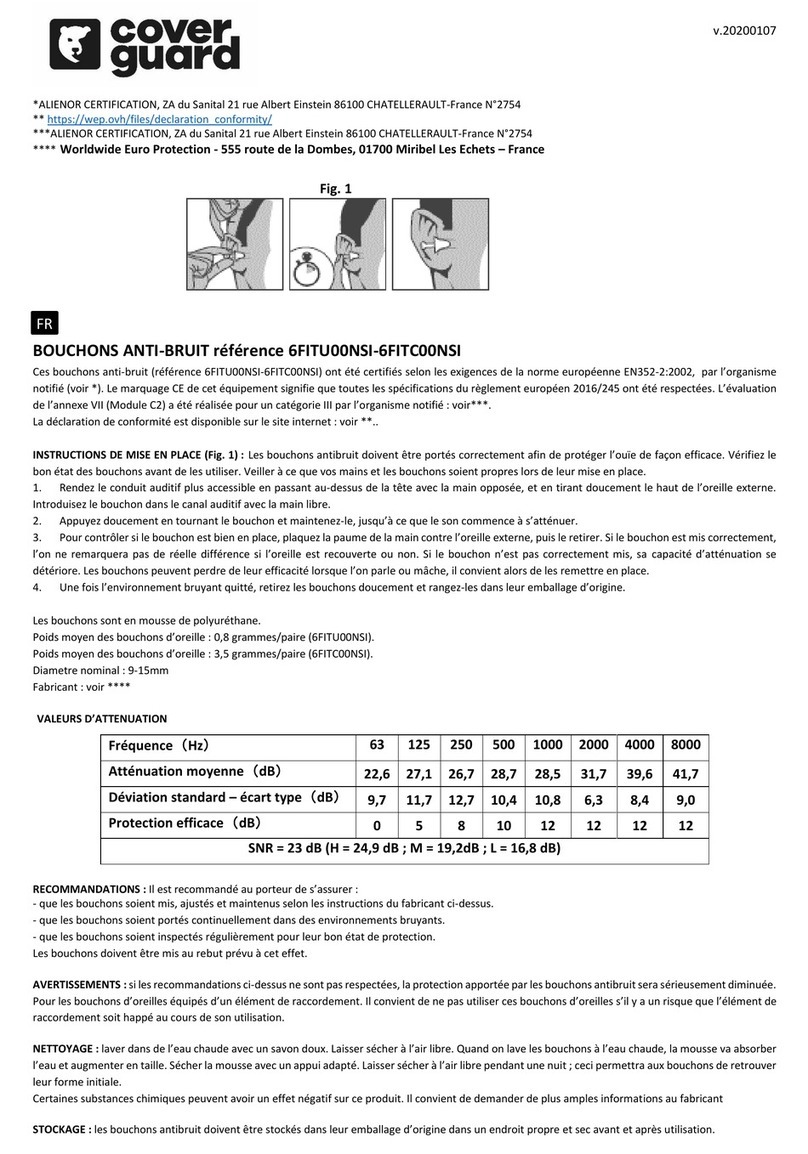
cover guard
cover guard 6FITU00NSI Reference manual

Blackline Safety
Blackline Safety G6 Getting started guide
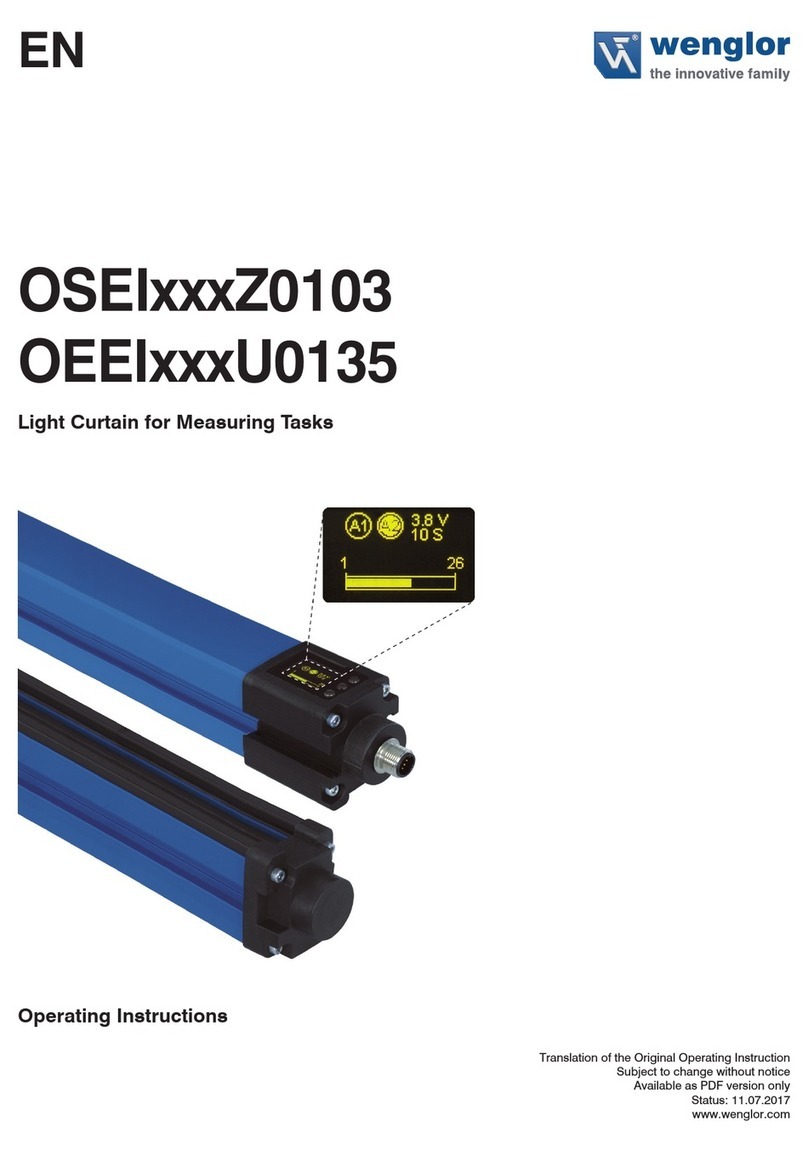
Wenglor
Wenglor OSEI Z0103 Series operating instructions

Kaya Safety
Kaya Safety rock RETRAC PS-10 user guide
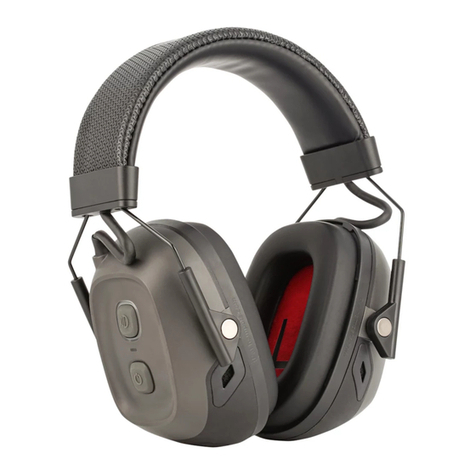
Honeywell
Honeywell Howard Leight VERISHIELD VS 321 User instructions
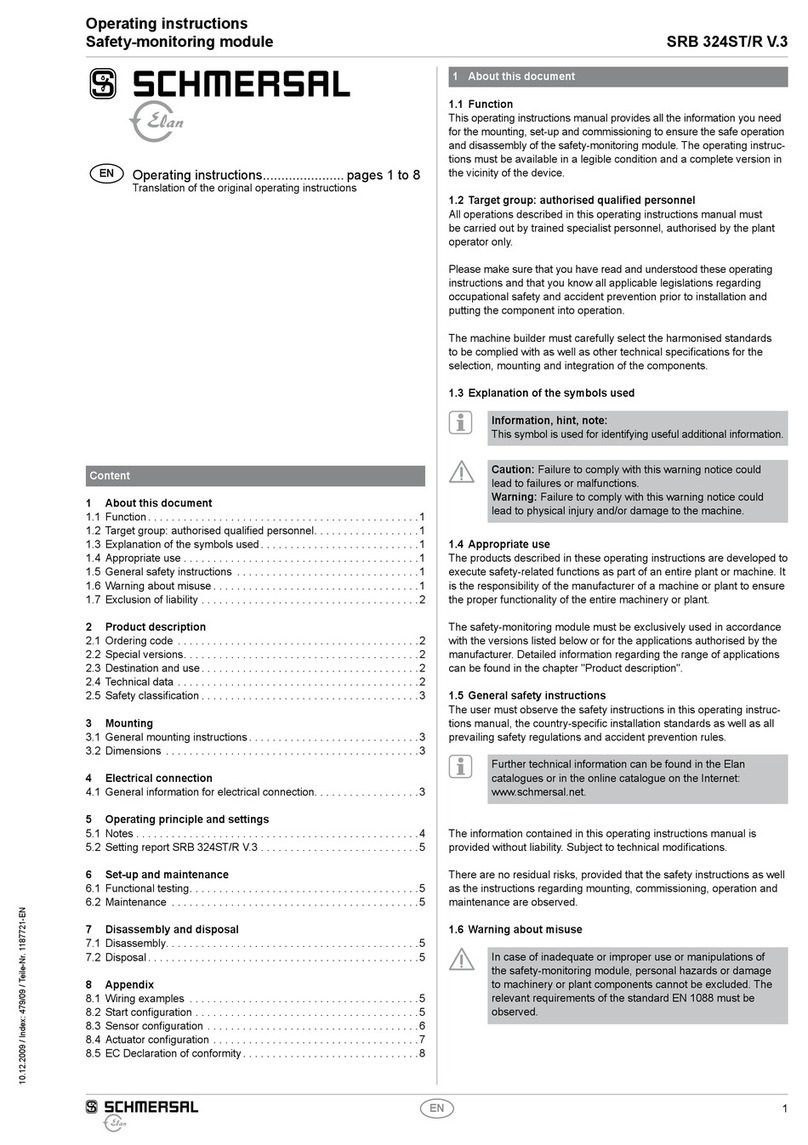
schmersal
schmersal SRB 324ST/R V.3 operating instructions



